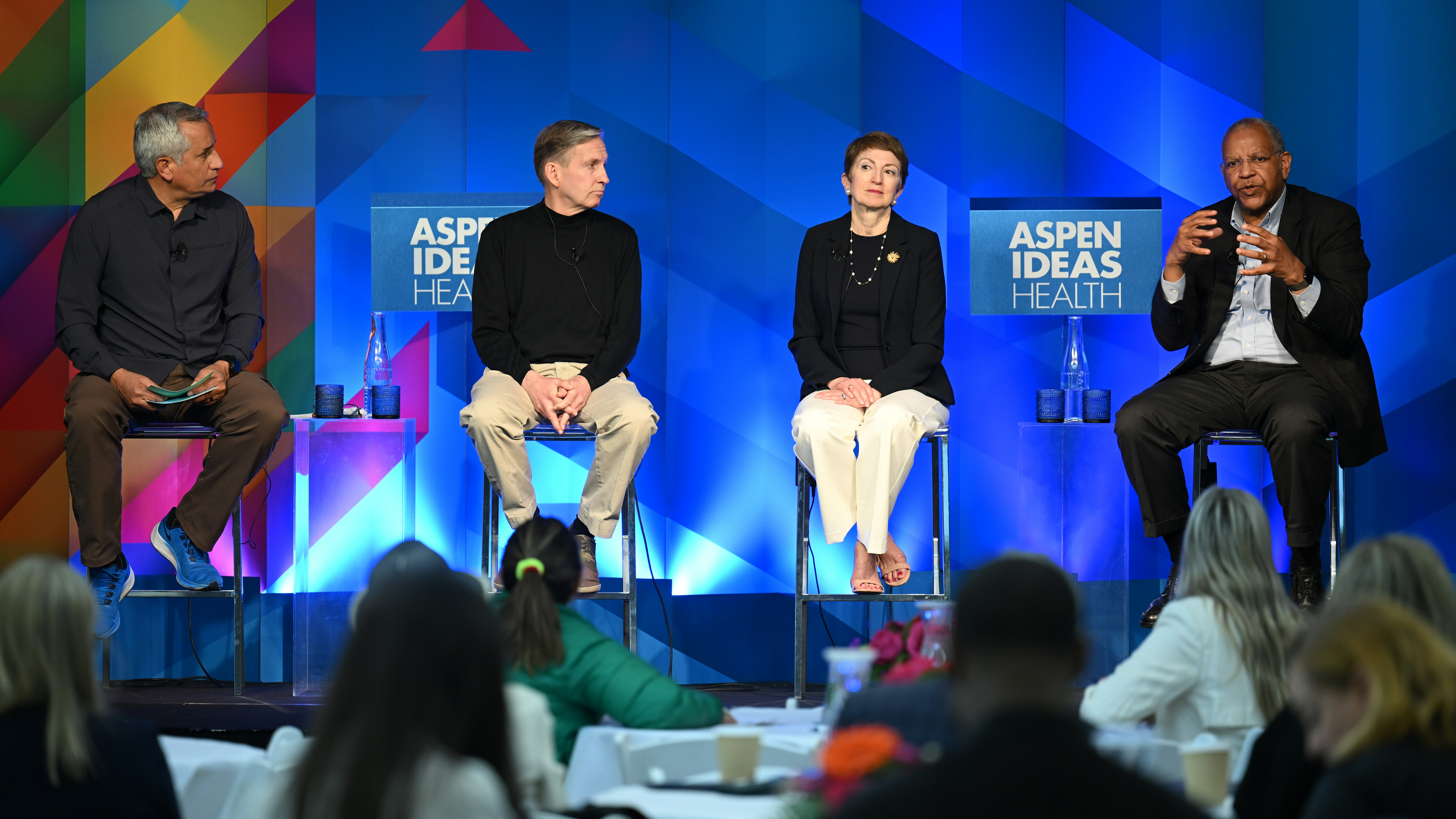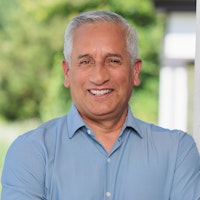

The following excerpts are from Otis Brawley’s explainer on immunotherapy, which took place on June 23, 2022, at Aspen Ideas: Health. Listen to the full talk below:
1) Cancer immunotherapy was born in the 1880s, but research stalled for decades.
“It's not new. In 1883, there was a doctor named William Coley, and he had a man who had a head/neck cancer. This guy got a strep infection of his neck tumor, and his neck tumor started to shrink. It didn't cure him, but the tumor started shrinking as it got infected. That was the beginning of immunotherapy. We’ve been trying to figure out what it is about the immune system that causes it to fight cancer. ‘Coley’s toxins’ floated around for a good 50 or 60 years after that and eventually floundered. But ever since Dr. Coley demonstrated this, we've been trying to figure out how we could use the immune system as the fourth pillar in the treatment of cancer behind surgery, radiation, and chemotherapy.”
2) A century later, tumor-infiltrating lymphocytes and Interleukin-2 injections moved the needle.
“In the 1980s, a group of surgeons led by Steve Rosenberg started looking at tumor-infiltrating lymphocytes, which are white blood cells that grow into a tumor. When there are white blood cells all throughout the cancer, it’s the immune system trying to fight off that tumor. So, how can we harvest this? Or, how can we take this and make it into a treatment? Well, we found some chemicals that are made by the immune system. We call them the interleukins. Early on in the 1980s and into the 1990s, we first started giving people Interleukin-2 injections to see if it would stimulate white cells to fight off their tumor. Then, Steve Rosenberg got really smart and took tumor-infiltrating lymphocytes out of a person's tumor, took it to the lab, and got those lymphocytes into a test tube. We found out that if we put some Interleukin-2 and some other things in there, we can actually get those lymphocytes to start propagating. We would then transfuse those lymphocytes back into the patient, hoping that those lymphocytes had been programmed in some way similar to a vaccine. In some people with kidney cancer and some people with melanoma, the tumors would shrink. This is where immunotherapy started moving.”
3) From the 1990s until now, the development of “checkpoint inhibitors” has been promising, but these drugs still have drawbacks.
“In the 1990s, we started understanding even more about the immune system. We started saying, ‘how can we do this better?’ That's when a couple of amazing scientists came along. Jim Allison, who is now at MD Anderson and won the Nobel Prize for much of what I'm about to tell you about, was able to figure out that a lung cancer sitting in someone's lung is able to evade the immune system because of what are called checkpoints. A checkpoint is actually very, very simple. If I'm a lung cancer, I can have a ligand target, which we call PD-L1. PD-L1 on the lung cancer cell is simply a signal – ‘I am a friend do not destroy me.’ It is a signal to something called the PD-1 receptor on the white cell. If I have a white cell that encounters a cell and the PD-1 receptor sees a PD-L1, it passes and goes on to the next cell. What Allison was able to do was then to develop checkpoint inhibitors. Our checkpoint inhibitors will mask the PD-L1. The cancer cell cannot say to the white cell, ‘I am a friend do not attack me.’”
"Then we developed another group of cancer drugs that actually block the PD-1 on the white cell. But think about this for a second, because this might not be a too good of an idea. We have a way of making the white cells go blind, so everything is the enemy. Some of these drugs were so good at what they do, that we all of a sudden had the white cells of patients who got these drugs in clinical trials attack their kidneys, attack their hearts. What I’m describing fror you is called Lupus.”
4) Immunotherapy is more effective on “dirtier” cancer.
“Non-small cell lung cancers are 80-85% of all cancers. Almost all the small cells are linked to smoking, and the majority of the non-small cells are linked to smoking. But there are some non-small cells that are not linked to smoking. The cancers that are linked to smoking are what we call dirty. When you look at the cell, the cell is terribly disorganized. If you look at the cell surface, the cell surface expresses a lot of antigens and a lot of targets. Non-smokers who get lung cancer — which are about 20% of lung cancer patients — get the non-small cell kind. In their cancers, the cells are much cleaner on the outside.”
“Interestingly, our immunotherapies are much better for the dirtier cancers than for the cleaner cancer. Literally, for people who develop non-small cell lung cancer who are not smokers, the immunotherapies don’t work on them nearly as well. We do have some precision medicines that actually interfere with some of the molecular mechanisms within the cell, and non-smokers who have non-small cell lung cancer are more likely to respond to those drugs. But they’re not candidates for immunotherapy.”
5) Immunotherapy research development is slowing in the U.S. because there are too many drug trials available.
“Right now in the United States, there are at least 30 immunotherapy drug checkpoint inhibitor drugs out there and at least 400 clinical trials that are trying to develop these drugs. Ironically, one of the problems that we're starting to run into is we have so many of these drugs that we don't have enough patients. Or, at least, we don't have enough clinics that are capable of doing clinical trials. The plethora of drugs is slowing the development of the drugs. When I do a clinical trial, I need 80-100 people who have the same disease and need to give them the same drug. If I have only a certain number of clinics that can offer clinical trials across the country, and those clinics are offering several different kinds of these drugs, it's going to take me and my drug longer to get to that aid. It's actually an embarrassment of riches: we are slowing down cancer progress because we have so many options in terms of drugs to develop.”
For more on the latest in cancer prevention, diagnosis, and treatment, watch Otis Brawley's Aspen Ideas: Health conversation with Lisa DeAngelis, Peter Pisters, and John Torres:





